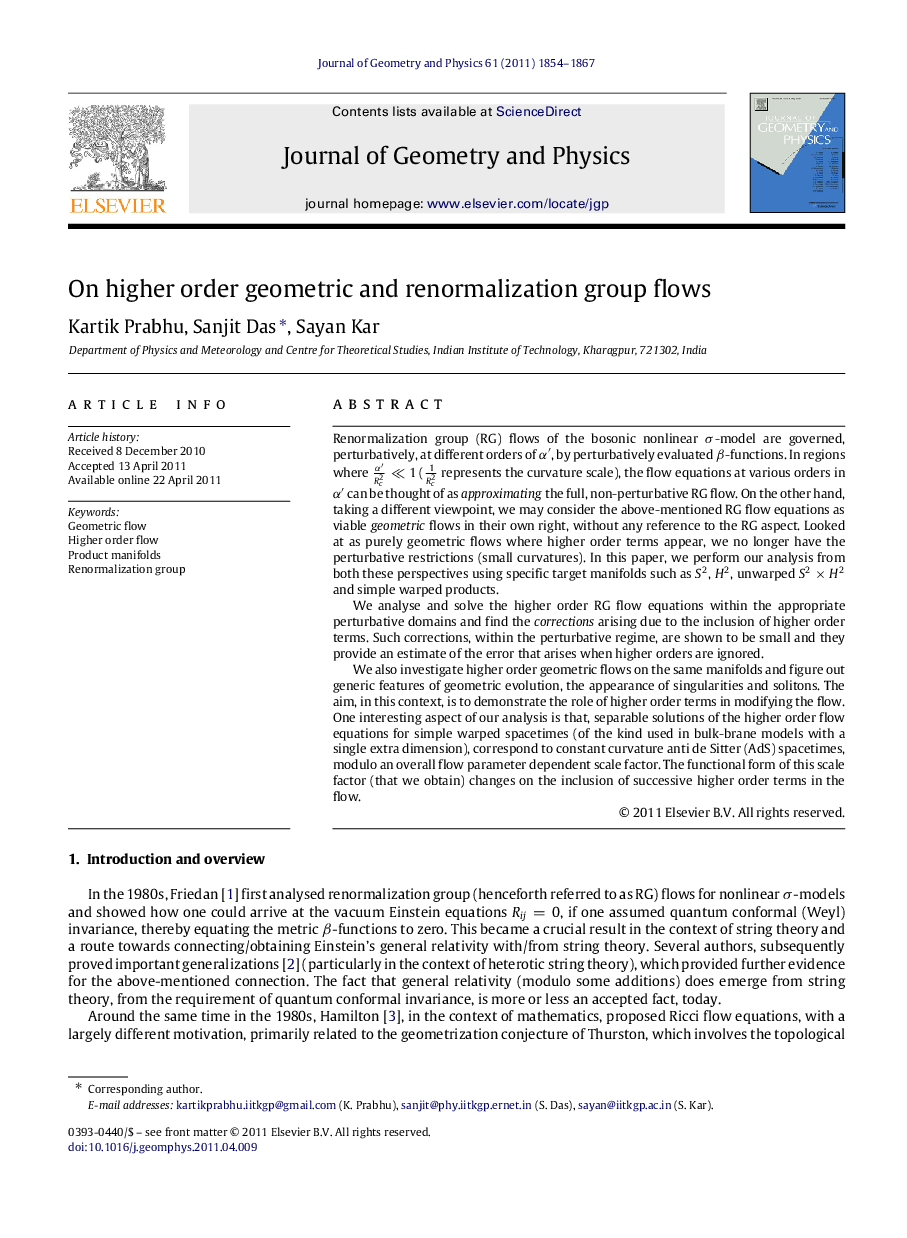| Article ID | Journal | Published Year | Pages | File Type |
|---|---|---|---|---|
| 1893004 | Journal of Geometry and Physics | 2011 | 14 Pages |
Renormalization group (RG) flows of the bosonic nonlinear σσ-model are governed, perturbatively, at different orders of α′α′, by perturbatively evaluated ββ-functions. In regions where α′Rc2≪1 (1Rc2 represents the curvature scale), the flow equations at various orders in α′α′ can be thought of as approximating the full, non-perturbative RG flow. On the other hand, taking a different viewpoint, we may consider the above-mentioned RG flow equations as viable geometric flows in their own right, without any reference to the RG aspect. Looked at as purely geometric flows where higher order terms appear, we no longer have the perturbative restrictions (small curvatures). In this paper, we perform our analysis from both these perspectives using specific target manifolds such as S2S2, H2H2, unwarped S2×H2S2×H2 and simple warped products.We analyse and solve the higher order RG flow equations within the appropriate perturbative domains and find the corrections arising due to the inclusion of higher order terms. Such corrections, within the perturbative regime, are shown to be small and they provide an estimate of the error that arises when higher orders are ignored.We also investigate higher order geometric flows on the same manifolds and figure out generic features of geometric evolution, the appearance of singularities and solitons. The aim, in this context, is to demonstrate the role of higher order terms in modifying the flow. One interesting aspect of our analysis is that, separable solutions of the higher order flow equations for simple warped spacetimes (of the kind used in bulk-brane models with a single extra dimension), correspond to constant curvature anti de Sitter (AdS) spacetimes, modulo an overall flow parameter dependent scale factor. The functional form of this scale factor (that we obtain) changes on the inclusion of successive higher order terms in the flow.
